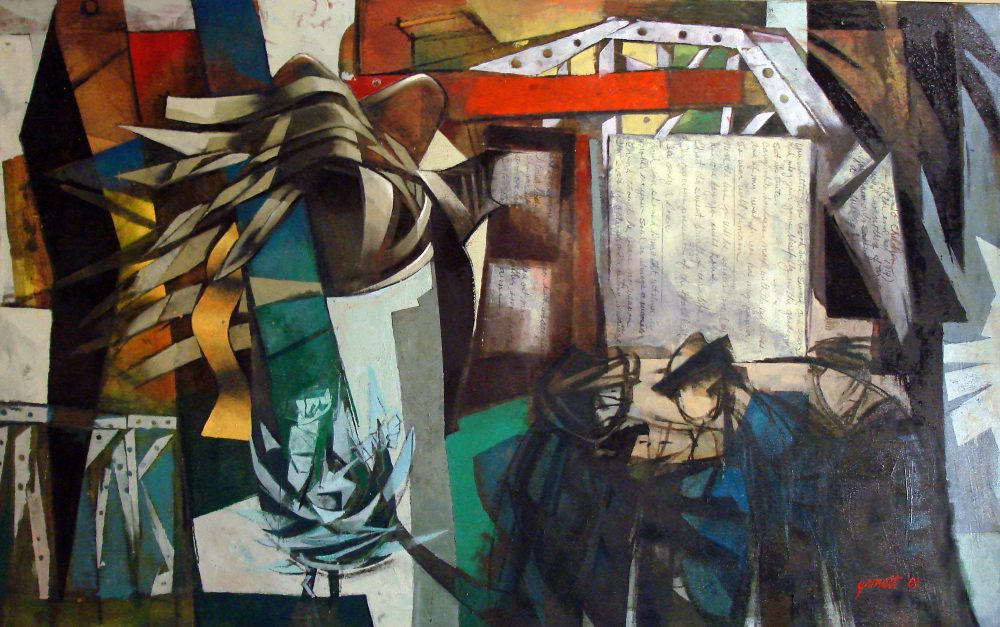Children of 1914 by William Dyas Garnett
- Title: Children of 1914
- Artist: William Dyas Garnett
- Medium: Oil on canvas
- Size: 41"h x 66"w
- Added to collection: 2004
- Donor: Purchased by Portland Community College, Rock Creek Campus
- Campus: Rock Creek
- Location: B3/1 N Hallway
Shards of metal, with edges like razors and punctured with holes as if forming a makeshift bridge or gathered into a tangle of unfurling ribbons, span a strange shattered landscape, relieved by one quiet rectangle of cursive script, where below three anonymous figures crouch together. This painting by William Dyas Garnett manages to poetically evoke the sound of machines, the ruin of destruction and the landscape of grief. It is an enigmatic and elusive painting whose images seem to bristle like knives before dissolving back into abstraction. The surface of this large (41x66") oil painting on canvas is meticulously engineered with an impressive array of textures from the metallic reflective sheen to the delicate handwriting to the thick, evenly applied slabs of dirty blue and blood red. But what does it all mean?
The title "Children of 1914" comes from a poem by Hermann Hesse. Hesse (better known for his novels such as Steppenwolf and Siddartha) also wrote a series of moving poems expressing his dread as Germany entered World War I. One poem, "To Children" is the source of the cursive text in the painting (in a translation from German by James Wright):
You know nothing of time,
You know only that, somewhere in the distance,
A war is being fought,
You whittle your wood into sword and shield and spear
And play your game blissfully in the garden,
Set up tents,
Carry white bandages marked with the red cross.
And if my wish for you has any power,
So war will remain
For you, always, a dim legend,
So you will never stand in the field
And never die
And never rush out of a house crumbling in fire.
Garnett painted this in 2001 in the aftermath of 9/11. The twisted shards of metal may suggest the ruins of the Twin Towers and the figures crouched in the lower right could be the first responders. Hesse's poem could just as easily apply to that particular moment in history:
Nevertheless you will be soldiers one day
And one day you will know
That the sweet breath of this life
This precious possession of the heartbeat
Is only a loan...
And you shall know that whatever is noble
In your soul is always a warrior,
Even though he bears no weapons,
That every day a struggle and a destiny is waiting....
Think of the blood, the shambles, the ruin
On which your own future reposes,
And how... upon death and sacrifice is built
The tiniest happiness.
Then your life will flame out more
And one day gather even Death
Into its arms.
This painting offers an elegy that in 2019 has only gained more powerfully in its sense of memorial for 9/11 since it was painted.

